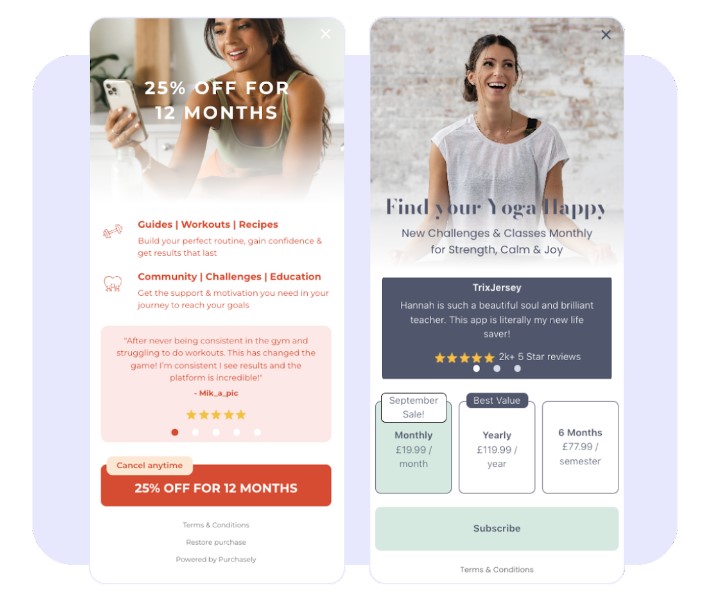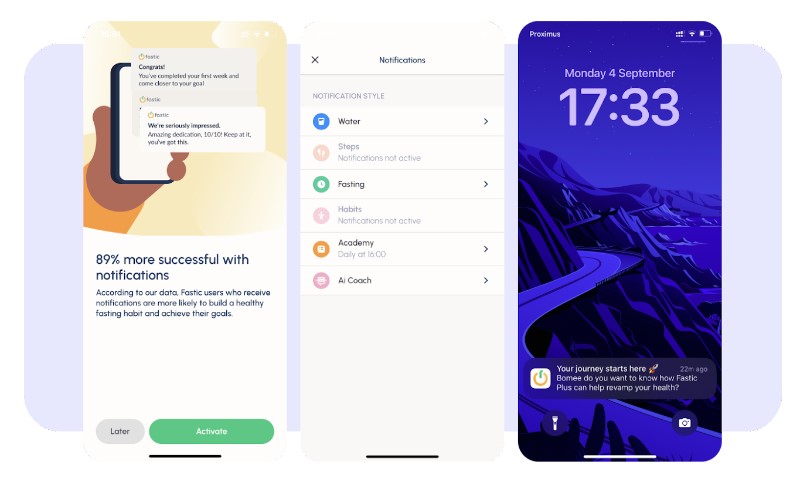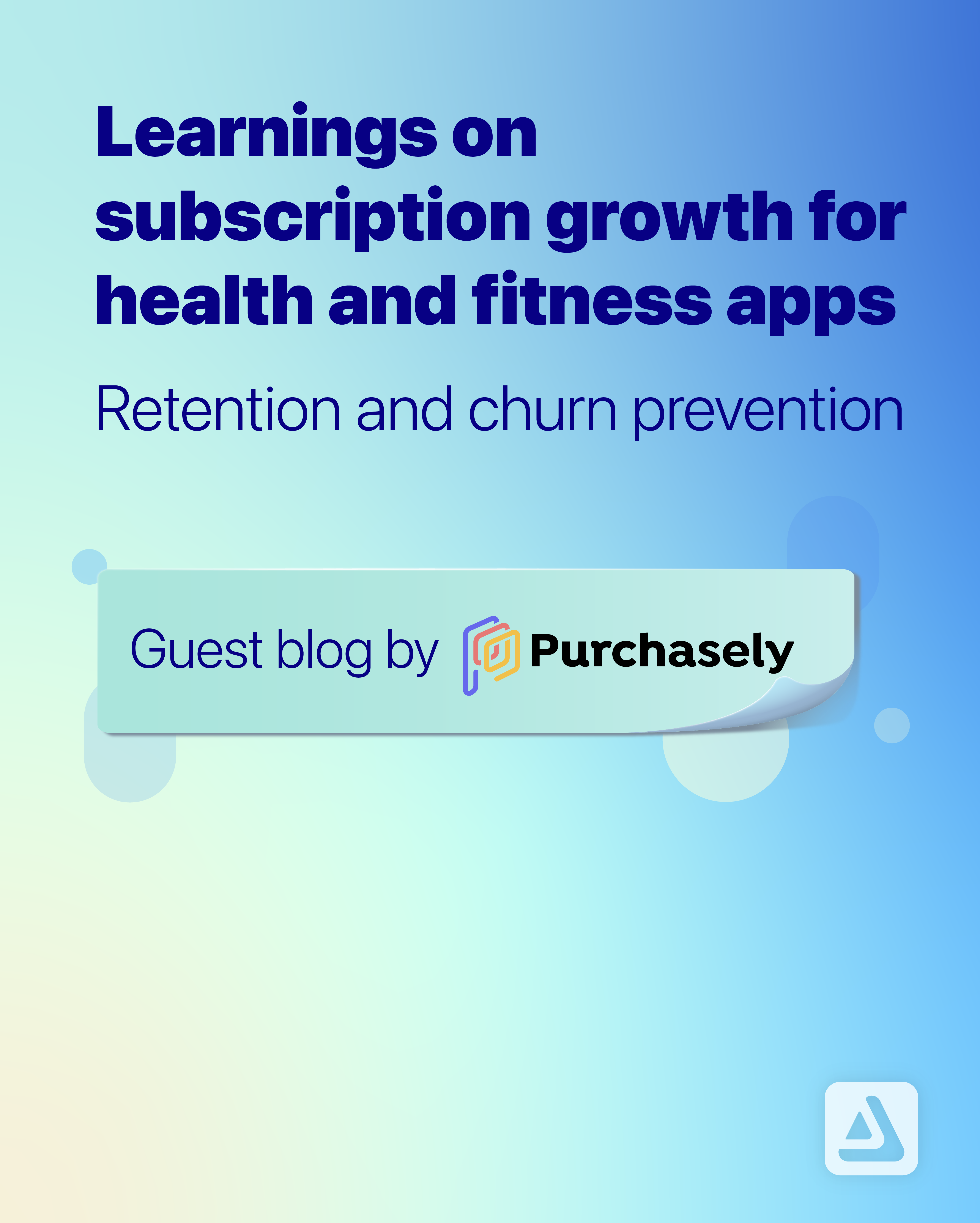
Learnings on subscription growth for health and fitness apps – retention and churn prevention
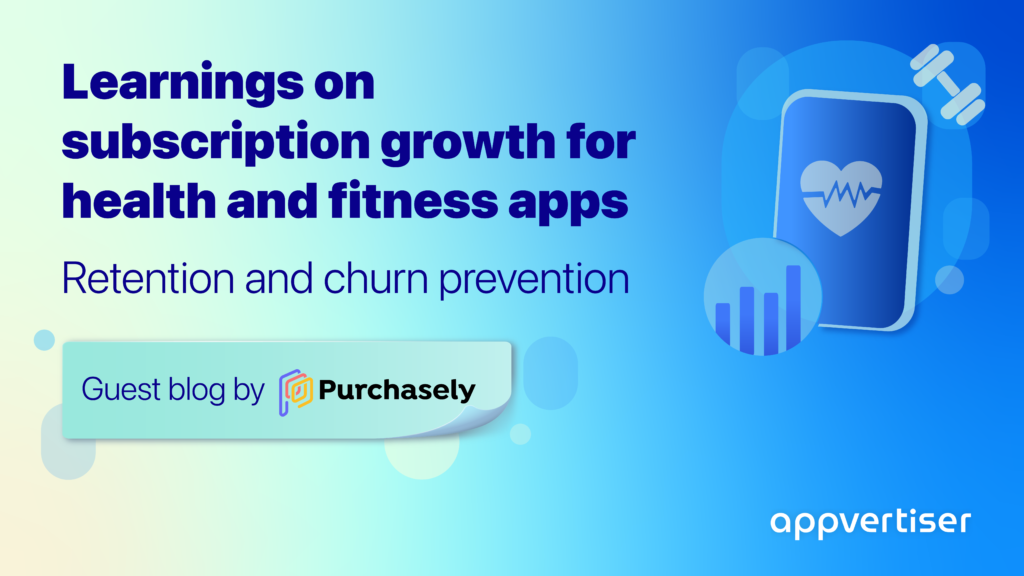
This post is brought to you by Purchasely, the all-in-one solution for making apps personal, frictionless, and profitable. It is part of ‘Learnings on subscription growth for health and fitness apps’, a series co-produced by Appvertiser and Purchasely.
At the intersection of the growing interest in subscription-based monetization models and the global trend around health and wellness, the Purchasely team has had the privilege of collaborating with a diverse array of health apps with varying maturity.
In this article, we’ll talk about some lessons we learned:
Retention and churn: Why retaining health app users such a challenge and what are some various tactics to keep churn at bay.
Best examples: Real-world examples from the health app category, and how these apps master promoting, discounting, personalizing, providing grace periods, and leveraging real-time notifications to enhance retention.
Why is retention so difficult?
We can’t discuss the growth of the health and fitness app market without discussing the COVID-19 pandemic. At the onset of the pandemic, traditional gyms became inaccessible, immobility was imposed and many people turned to the virtual alternative to stay active and healthy. As life gradually returned to normal, app installations obviously saw a decline.
Though, the story doesn’t end there. In 2022, the global fitness app market had already reached USD 1.3 billion in value and is projected to reach USD 35.71 Billion by 2030.
The number of health and fitness app users in the US also increased from 62.7 million in 2019 to 86.3 million in 2022.
Along the way, the unavoidable challenge emerged: retaining users.
In 2022, the average health and fitness app struggled with a 30-day retention rate of just 3.7%, trailing behind other app categories like news, shopping, finance, and music.
Solving the retention enigma is a multifaceted puzzle:
 A plethora of choices: Today’s users have an abundance of health apps at their fingertips. If they find their current app lacking, switching to a competitor is effortless.
A plethora of choices: Today’s users have an abundance of health apps at their fingertips. If they find their current app lacking, switching to a competitor is effortless.
 Evolving user needs: Health and well-being journeys are deeply personal, and individuals’ goals can transform over time. What was once a perfect fit may no longer align with their aspirations.
Evolving user needs: Health and well-being journeys are deeply personal, and individuals’ goals can transform over time. What was once a perfect fit may no longer align with their aspirations.
 Engagement hurdles: Health apps often tackle subjects like fitness, nutrition, and mental wellness, all of which pose unique challenges for user engagement. Motivation can wane, progress can stall, and sometimes, users simply forget to engage regularly.
Engagement hurdles: Health apps often tackle subjects like fitness, nutrition, and mental wellness, all of which pose unique challenges for user engagement. Motivation can wane, progress can stall, and sometimes, users simply forget to engage regularly.
 Fierce competition: To truly stand out and for long, offering fancy features isn’t enough; continuous adaptation and experimentation is essential.
Fierce competition: To truly stand out and for long, offering fancy features isn’t enough; continuous adaptation and experimentation is essential.
Different ways to retain and prevent churns
Here are some proven strategies, complemented by insights from Purchasely and app growth and marketing experts.
1. Urgency: Seizing the moment
Creating a sense of urgency is a time-tested strategy that taps into the fundamental principle of FOMO (Fear of Missing Out). Knowing that a great deal is about to go out the window, and it won’t come back, definitely plays on user psychology.
Example: FitHer’s paywall on the left offers a time-limited 50% discount on a specific subscription plan, Enduco provides a promo code that is only valid for the first subscription to the 3-month subscription plan.
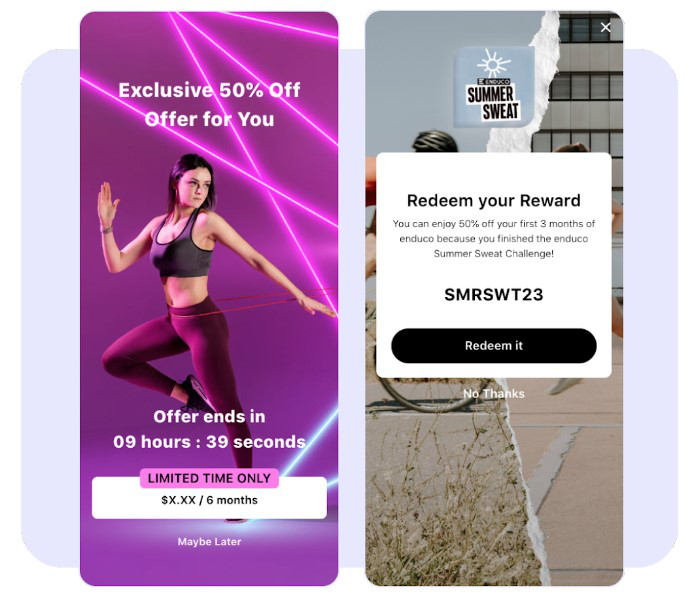
2. Social proof: Power of authenticity
Testimonials, user-generated content, real progress stories, and influencer endorsements bring something to the table that traditional marketing doesn’t: authenticity.
When users see others achieving their fitness goals or sharing their health journey, it can also create a sense of community and motivate users to stay engaged.
Example: WeGlow on the left and Yoga Happy on the right leverage their paywalls to share social proofs generated by their own happy users.
3. Personalization: Tailored experiences
Health and wellness are incredibly individualized journeys, with each user having their own unique health standards, values, and goals. Therefore, catering to the specific needs of each user is particularly effective for health and wellness apps.
Example: From the onboarding, in-app content and features to paywall engagements, MyRealFood is all about the personalized experience from the first step into the door.

4. Churn optimization: A second chance
Sometimes, all it takes is a little extra nudge to win users back. Churn, whether involuntary (due to payment issues) or voluntary, can be a significant challenge. However, it also presents an opportunity.
Communicating about the churn, and step further, offering a timely discount or to churned users can be that gentle push they need to reconsider and return.
Example: EvolveYou doesn’t shy away from addressing churns head-on. This proactive approach involves reaching out to users with attractive offers, and encouraging them to give the app a second chance.


